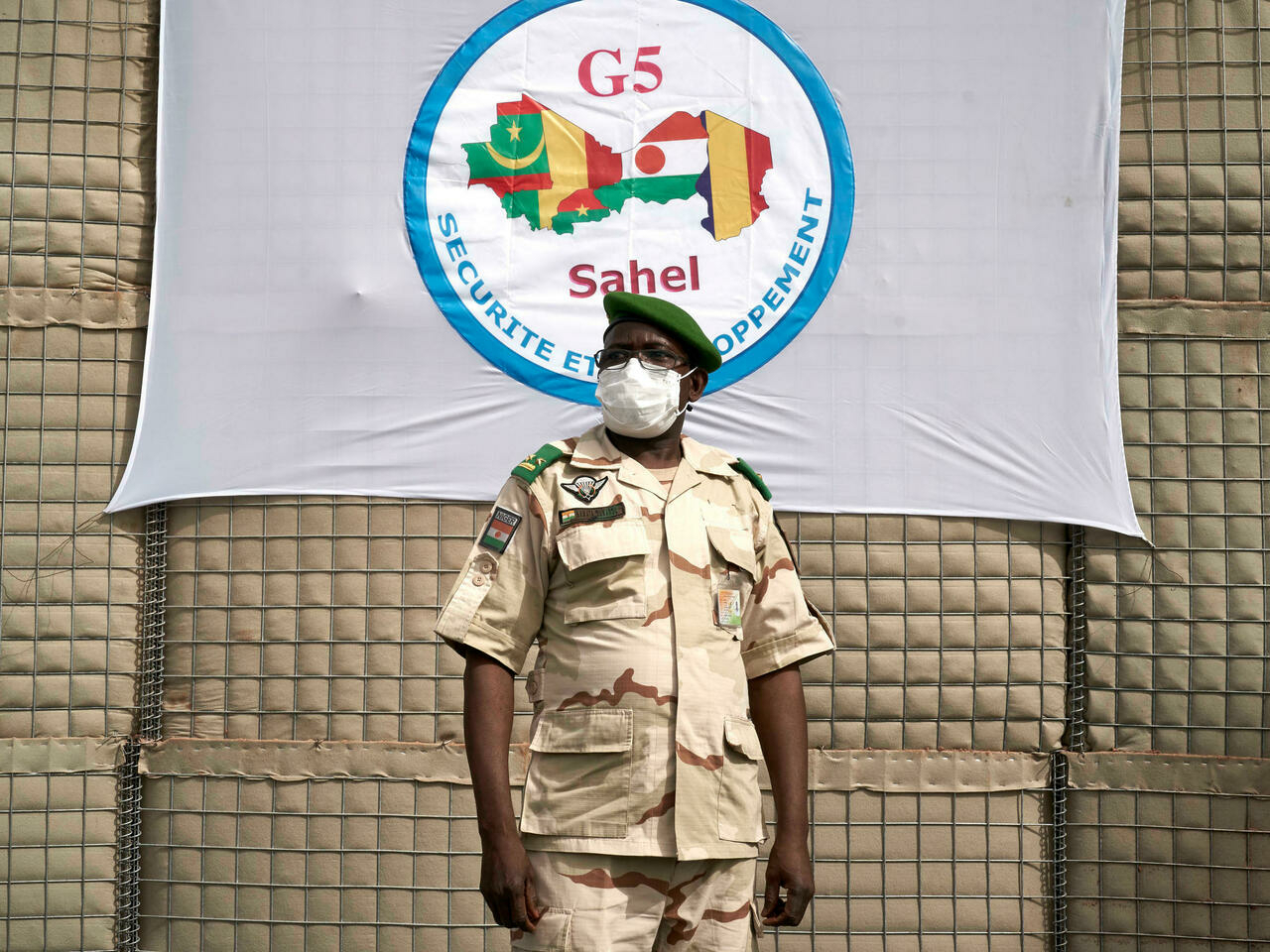What the Boko Haram leader’s death means for the war against terror
Thenationalnews – On June 16, Boko Haram confirmed the death of its leader Abubakar Shekau. Shekau died during clashes with the competing Islamic State for the West African Province (Iswap) in the Sambisa Forest in north-eastern Nigeria, one of the last regions controlled by Boko Haram. At first sight, the death of Shekau, the mastermind behind many atrocities committed against African civilians, may come as a relief. But it also reveals a darker reality: the steady replacement of Boko Haram by ISIS in the Lake Chad Basin region – which includes Niger, Nigeria, Chad and Cameroon – and its new security implications.
Shekau had led Boko Haram since 2009, the year the group’s founder Mohammed Yusuf died. The organisation caught international attention in 2014 with the kidnapping of the Chibok schoolgirls that shocked the world and triggered the #BringBackOurGirls movement. But soon afterwards, Shekau and his commanders faced fierce competition from the emerging ISIS, whose extremist doctrine and military victories in Syria and Iraq during the same period, appealed to its combatants.
By 2015, Boko Haram was losing ground against the Nigerian armed forces, especially after the battle of Gwoza in March that ended in a debacle for the terrorist group. Contemplating the risk of total collapse, Shekau pledged allegiance to ISIS and Boko Haram officially became Iswap. However, the partnership was no more than a marriage of convenience: ISIS commanders from the Levant provided the fighters in western Africa with technical expertise and financial support that Shekau was unable to get on his own. The propaganda machine of ISIS also proved much more effective at attracting new recruits on social media networks than Boko Haram’s.
But very quickly, the partnership turned sour and provoked an internal rift. Shekau favoured military tactics targeting civilians, in particular women and children, whereas ISIS leaders prioritised the destruction of state infrastructure, especially security forces. He also feared that the merger with ISIS would eventually erode his own personal power. As a result, by mid-May 2016, Shekau and his inner circle left Iswap to recreate Boko Haram. The resurrected organisation was now engaged in a turf war with Iswap, led by Abu Musab Al Barnawi, not only the former spokesperson of Shekau but also the son of Boko Haram’s founder, Yusuf.
The fratricidal battle between Boko Haram and Iswap proved unsustainable for Shekau. By 2020, the US Department of Defence estimated that the group’s operations had significantly dropped since the peak of 2014 and relied on a small pool of 1,500-2,000 fighters. On the other side, Iswap could claim between 3,500 and 5,000 combatants. Whereas Iswap operations in West Africa were growing in intensity and frequency, those of Boko Haram were limited to small areas between northern Nigeria and Cameroon. All in all, the death of Shekau last spring was not a sudden gamechanger, but rather the culmination of a long struggle that saw Iswap becoming the primary terrorist organisation in the region.
This shift has immediate implications for African governments and their international partners. As mentioned earlier, Iswap prioritised the targeting of armed forces to position itself as an alternative to state authority. This strategy is now in full display in areas such as northern Cameroon and north-eastern Nigeria, where national governments lack the resources and the influence to control remote regions. It is, for instance, estimated that the Nigerian government can only access about 20 per cent of its Borno State, which borders Chad and Niger. Likewise, in the department of Mayo-Sava in Cameroon’s Far North region, attacks by Iswap on military positions increased in recent months. Iswap, meanwhile, is courting the leaders of local communities. In late July, after Eid Al Adha, the organisation posted videos on social networks of celebrations with inhabitants in various regions – including the Sambisa area, the historical backyard of Boko Haram – to underline this strategy.
If Boko Haram applied systematic terror campaigns, Iswap’s approach is closer to the one of an insurgency, aiming to disconnect the ties between local communities and state authorities. Here, one can see similarities in the tactics of Iswap and its sister organisation, the Islamic State in the Greater Sahara (ISGS) based in the Sahel region. For instance, both branches focus their efforts on border areas – the Nigeria-Chad-Cameroon triangle for Iswap and the Mali-Burkina Faso-Niger zone for ISGS. These are typically regions where armed forces struggle not only to control their national territories, but also to share information with neighbouring countries to prevent cross-border illicit flows.
This leads to a major unknown: the level of co-ordination between Iswap and the other branches of the group, either in Africa or in the Middle East. At this stage, western intelligence agencies assess that there are already significant exchanges between military commanders. Middle Eastern advisers provide technical expertise to their African counterparts and there is evidence of logistical co-ordination between militants in the Sahel and the Lake Chad basin.
However, Iswap appears so far to emphasise its local agenda to avoid being seen as a mere regional branch of the central ISIS organisation. This posture may evolve depending on both the reactions of local communities to Iswap tactics and the ambitions of ISIS’s global leadership. Specifically, the steady growth of ISIS in Africa in the past five years may lead its leadership in the Middle East to further emphasise its military successes there. But this would not automatically mean a retreat from Syria and Iraq, where ISIS terrorist operations have in fact also increased in the past year.
Finally, the replacement of Boko Haram by Iswap implies different policies to prevent its future growth. States from the Lake Chad Basin region suffer from limited capacities. They also sometimes face an erosion of their political legitimacy that deepens a feeling of resentment among communities living far away from the capital cities. In recent years, the Multinational Joint Task Force, composed of approximately 8,000 soldiers from five African countries, has expanded its counterterrorism missions to tackle these security challenges, but its military effectiveness remains modest.
Furthermore, international partners are unlikely to increase their involvement in the area. The US reduced its military footprint in western Africa during the Donald Trump presidency, ending, for instance, an intelligence, surveillance and reconnaissance operation in Cameroon. The Biden administration has shown no interest in revising the policy either. France’s armed forces, meanwhile, are starting a process of gradual withdrawal from the Sahel region after years of mixed results in the fight against terrorism there.
International interest for West Africa – or lack thereof – may change in the future, especially if ISIS finds a way to recreate a proto-state in the area. Such a prospect would have dramatic consequences, not only for the development of West Africa but also for the global fight against terrorism. For the time being, it seems that the fate of the area will be primarily determined by the ability of local states to restore their authority in these impoverished regions.




